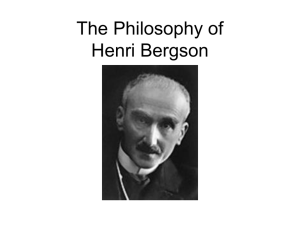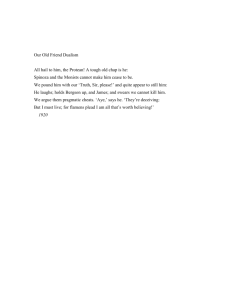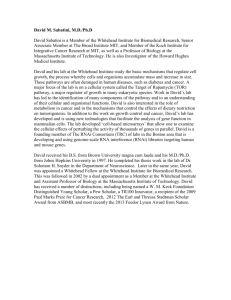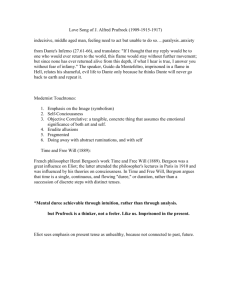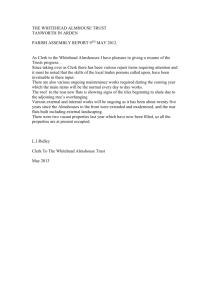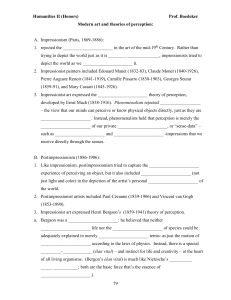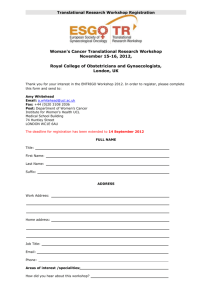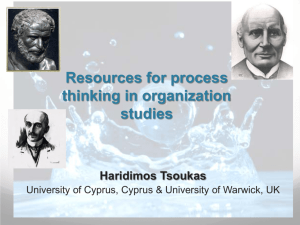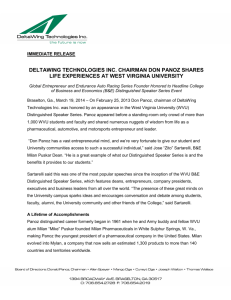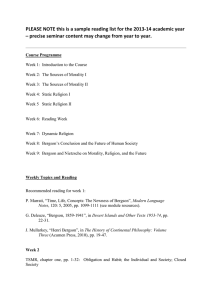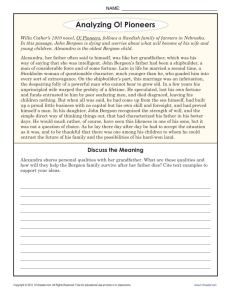MORINAGA Naomiki
advertisement
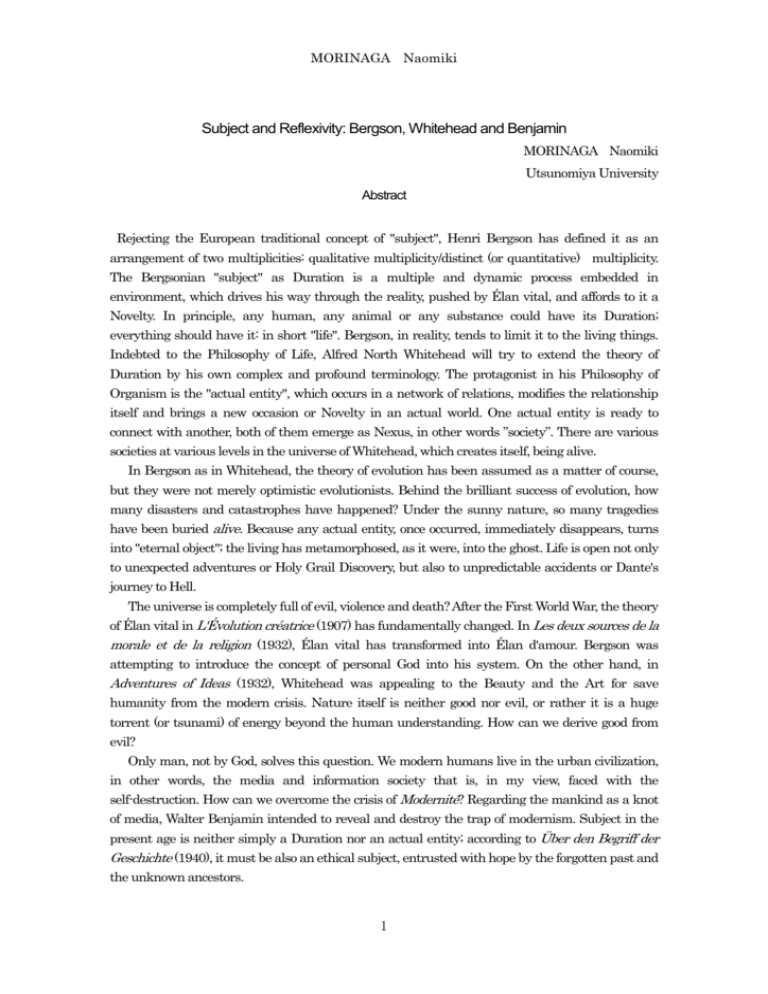
MORINAGA Naomiki Subject and Reflexivity: Bergson, Whitehead and Benjamin MORINAGA Naomiki Utsunomiya University Abstract Rejecting the European traditional concept of "subject", Henri Bergson has defined it as an arrangement of two multiplicities: qualitative multiplicity/distinct (or quantitative) multiplicity. The Bergsonian "subject" as Duration is a multiple and dynamic process embedded in environment, which drives his way through the reality, pushed by Élan vital, and affords to it a Novelty. In principle, any human, any animal or any substance could have its Duration; everything should have it: in short "life". Bergson, in reality, tends to limit it to the living things. Indebted to the Philosophy of Life, Alfred North Whitehead will try to extend the theory of Duration by his own complex and profound terminology. The protagonist in his Philosophy of Organism is the "actual entity", which occurs in a network of relations, modifies the relationship itself and brings a new occasion or Novelty in an actual world. One actual entity is ready to connect with another, both of them emerge as Nexus, in other words ”society”. There are various societies at various levels in the universe of Whitehead, which creates itself, being alive. In Bergson as in Whitehead, the theory of evolution has been assumed as a matter of course, but they were not merely optimistic evolutionists. Behind the brilliant success of evolution, how many disasters and catastrophes have happened? Under the sunny nature, so many tragedies have been buried alive. Because any actual entity, once occurred, immediately disappears, turns into "eternal object"; the living has metamorphosed, as it were, into the ghost. Life is open not only to unexpected adventures or Holy Grail Discovery, but also to unpredictable accidents or Dante's journey to Hell. The universe is completely full of evil, violence and death? After the First World War, the theory of Élan vital in L'Évolution créatrice (1907) has fundamentally changed. In Les deux sources de la morale et de la religion (1932), Élan vital has transformed into Élan d'amour. Bergson was attempting to introduce the concept of personal God into his system. On the other hand, in Adventures of Ideas (1932), Whitehead was appealing to the Beauty and the Art for save humanity from the modern crisis. Nature itself is neither good nor evil, or rather it is a huge torrent (or tsunami) of energy beyond the human understanding. How can we derive good from evil? Only man, not by God, solves this question. We modern humans live in the urban civilization, in other words, the media and information society that is, in my view, faced with the self-destruction. How can we overcome the crisis of Modernité? Regarding the mankind as a knot of media, Walter Benjamin intended to reveal and destroy the trap of modernism. Subject in the present age is neither simply a Duration nor an actual entity; according to Über den Begriff der Geschichte (1940), it must be also an ethical subject, entrusted with hope by the forgotten past and the unknown ancestors. 1
